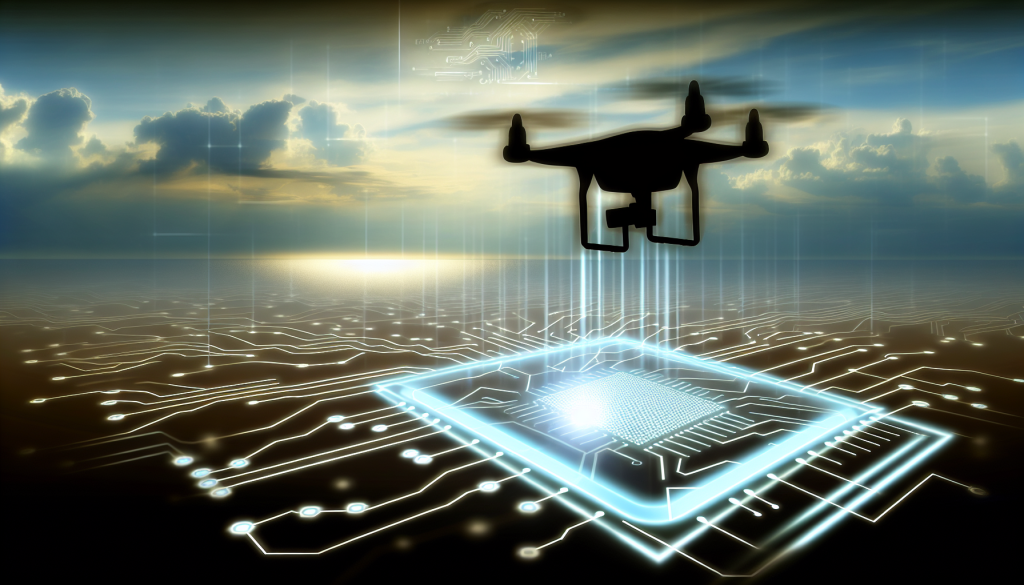The Rise of Drones: Transforming Warfare and Beyond
Drones have undergone a dramatic evolution since their inception, transitioning from simple surveillance tools used on battlefields to sophisticated, autonomous systems that can rival and even exceed the capabilities of human pilots. Their applications now span military, commercial, and even personal domains, marking a significant shift in how we perceive air power and technology.
Military Drones: The New Frontier
With an increase in demand for military drones, defense technology startups like Anduril Industries are racing to develop the next generation of autonomous weapons systems. These systems are designed for multifaceted combat operations that extend across land, air, and sea. Founded by Palmer Luckey, the creator of the Oculus VR headset, Anduril aims to innovate in defense technology while addressing contemporary security challenges.
Anduril’s Cutting-Edge Products
Anduril Industries has garnered attention for its wide array of advanced military drones and weapon systems. This includes everything from the Anduril Fury, touted as the Air Force’s first uncrewed fighter jet, to the compact Anduril Bolt, which can fit into a backpack. The company has made significant strides to outpace traditional defense contractors like Boeing and Lockheed Martin, emphasizing modular designs that can adapt to various military needs.
Fury: The Autonomous Air Vehicle
The Fury represents a new echelon of autonomous air vehicles (AAVs). Developed by Blue Force Technologies and acquired by Anduril, the Fury is designed to excel in combat scenarios. With a single turbofan engine, it can reach speeds exceeding 650 miles per hour and fly up to 50,000 feet, enduring gravitational forces that would incapacitate human pilots.
Equipped with Anduril’s Lattice software, the Fury integrates data from multiple sources, allowing it to execute complex missions autonomously or under human command. This technological marvel is part of the U.S. Air Force’s Next-Generation Air Dominance program, designed to operate alongside human-piloted aircraft like the F-22 Raptor.
Barracuda: Next-Gen Cruise Missile
The Barracuda is designed with affordability and rapid production in mind. With multiple variants, it can be launched from various platforms, including aircraft, ground vehicles, and naval vessels. The smallest variant, the Barracuda-100, showcases agility, while the larger Barracuda-500 can carry payloads exceeding 100 pounds and travel over 500 nautical miles. This versatility makes the Barracuda a formidable asset in modern warfare.
Ghost: Quick and Tactical
Anduril’s Ghost drone exemplifies portability in military technology. Capable of being assembled in under two minutes and fitting into a tactical case, the Ghost is primarily designed for intelligence, surveillance, and reconnaissance missions. It can autonomously track objects in its environment, making it a valuable asset for ground troops.
Roadrunner: Speed and Efficiency
The Roadrunner is another innovative AAV with dual turbojet engines, allowing it to achieve high subsonic speeds. Its design emphasizes reusability and rapid deployment, making it a suitable option for time-sensitive missions. The Roadrunner-M variant functions as an explosive interceptor, targeting aerial threats with high precision.
The Altius: Versatile Loitering Munition
Anduril’s Altius drones serve various purposes, from ISR missions to electronic warfare. The Altius-600, for instance, can operate for up to four hours and relocate approximately 273 miles while carrying multiple types of payloads. These drones offer essential support to military operations by enabling coordinated strikes and intelligence gathering.
Integrating AI in Military Technology
The incorporation of artificial intelligence into military systems represents a seismic shift in defense strategy. Companies like Anduril are actively pursuing partnerships with tech giants such as Microsoft and OpenAI to enhance autonomous capabilities. AI has the potential to streamline operations and improve decision-making processes on the battlefield, although it also raises ethical concerns regarding autonomy and lethal decision-making.
Luckey argues for the inevitability of AI in defense, emphasizing the necessity of keeping pace with adversaries like China. He mentions that we have operated autonomous systems for decades, reiterating that integrating AI into the military is not just an option—it’s essential.
Ethical Considerations and Future Directions
The rise of AI-powered drones has sparked debates about ethics and safety in warfare. Questions surrounding autonomous lethal decision-making remain at the forefront of discussions regarding future military engagements. As the technology continues to advance, so does the need for comprehensive policies that address the implications of autonomous systems in combat scenarios.
Anduril’s future plans include building a massive drone manufacturing facility in Ohio, which aims to produce thousands of advanced military systems annually. This shift in production capabilities represents a significant leap towards an AI-driven defense strategy, shaping the forthcoming landscape of warfare.

